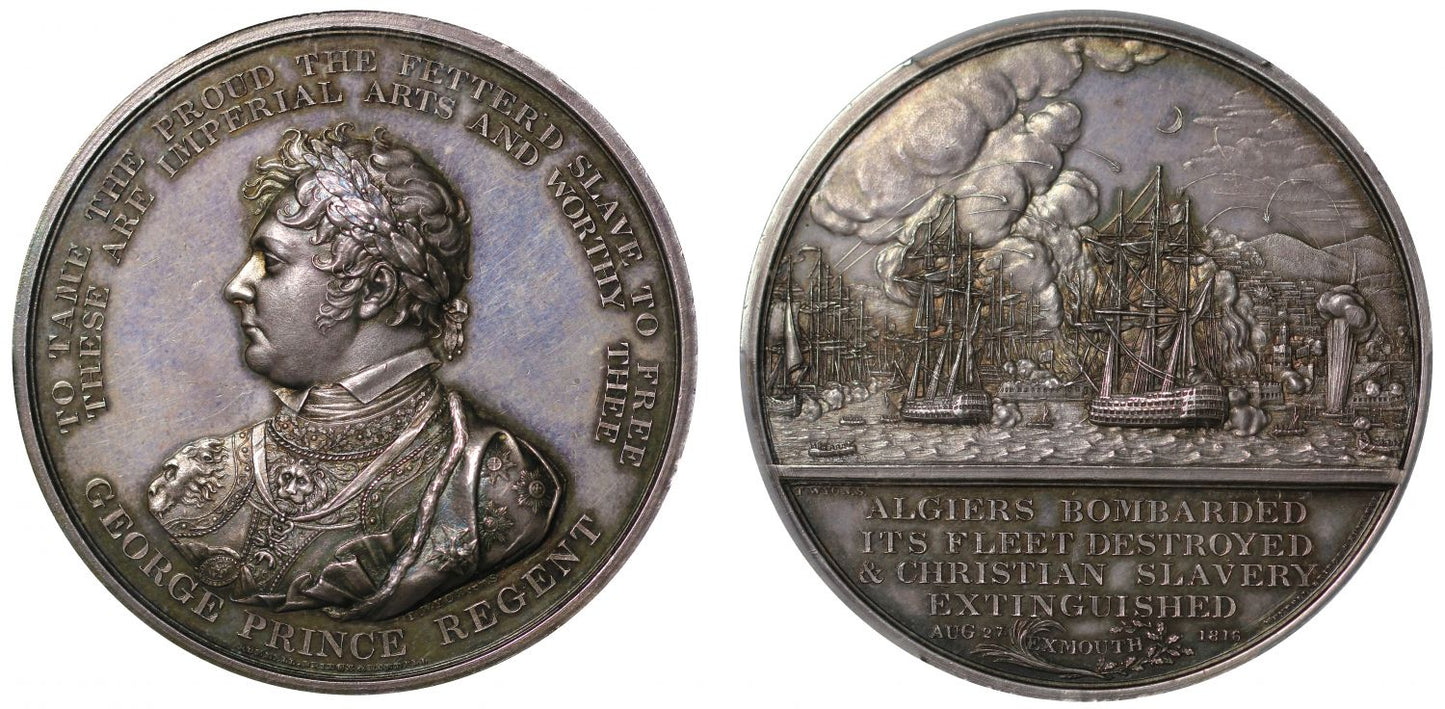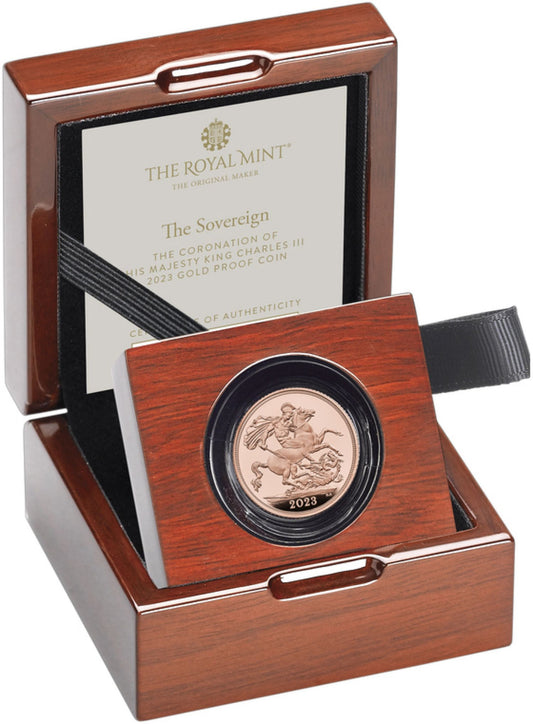FAQs
What makes a coin valuable?
I have coins to sell, what’s the next step?
How will my purchases be shipped?
What happens if I’m not entirely happy with my purchase?
The Bombardment of Algiers, 1816.
Anti-Slavery, The Bombardment of Algiers, 1816, silver medal with obverse by Thomas Wyon Jr. and reverse by Thomas Wyon Sr., bust of George, the prince regent, left, wearing the Order of the Golden Fleece amongst others, TO TAME THE PROUD THE FETTER'D SLAVE TO FREE THESE ARE IMPERIAL ARTS AND WORTHY THEE, rev. the bombardment, ALGIERS BOMBARDED ITS FLEET DESTROYED & CHRISTIAN SLAVERY EXTINGUISHED AUG 27 1816, EXMOUTH, 50mm (BHM 923; Eimer 1919). Rare, attractively toned, and extremely fine, in PCGS holder graded SP63.
During the Napoleonic Wars, out of necessity Britain had cooperated with the Barbary states to ensure the supply of resources to Gibraltar and the British Navy in the Mediterranean. At the end of the war, when in a position to do so, Britain exerted enormous pressure on those states to end their piracy and their enslavement of Christians. The Deys of Tunis and Tripoli bowed to the pressure, but the Dey of Algiers was more reluctant. When, perhaps as the result of a misunderstanding, Mediterranean fishermen under British protection were massacred by Algerian forces, Europe was outraged and Britain acted decisively. A modest British fleet attacked and severely damaged the port of Algiers in a battle which raged into the night until, at a point, the British fleet weighed anchor and sailed out of range of the Algerian defences. A letter was sent to the Dey explaining that the destruction of the harbour had been a display of British capabilities, that Britain held the Bey personally responsible, that he would have no peace with Britain unless he capitulated and furthermore that unless he capitulated immediately Britain would turn her forces against his city and his subjects. Some 3,000 Christian slaves were released as a result but the Dey soon replaced them with non-Christian Europeans, Jews and Africans, and the wider slave trade in Algeria continued until its colonization by France in 1830. During their heyday from the 16th to the 18th centuries Barbary slavers may have captured over a million people from as far north as Iceland, the Middle East, sub-Saharan and Western Africa, and even seafarers from the United States.
FAQs
What makes a coin valuable?
I have coins to sell, what’s the next step?
How will my purchases be shipped?
What happens if I’m not entirely happy with my purchase?













